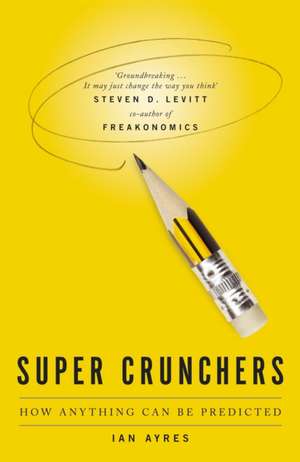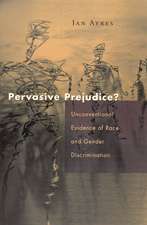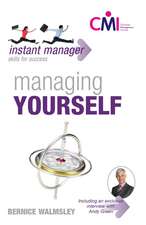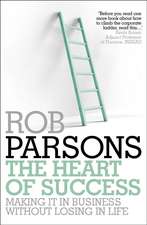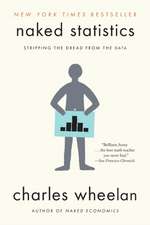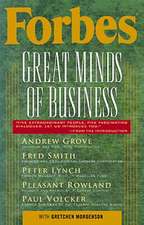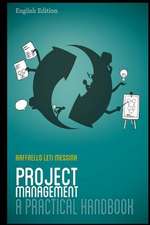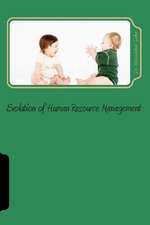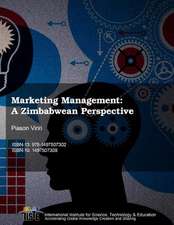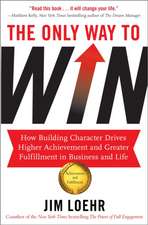Super Crunchers
Autor Ian Ayresen Limba Engleză Paperback – mai 2008
Super Crunchers are the pioneers who 'think by numbers' to find patterns in human behaviour and predict the future - with staggeringly accurate results
| Toate formatele și edițiile | Preț | Express |
|---|---|---|
| Paperback (2) | 52.33 lei 3-5 săpt. | +25.12 lei 6-12 zile |
| John Murray Press – mai 2008 | 52.33 lei 3-5 săpt. | +25.12 lei 6-12 zile |
| Bantam – 31 iul 2008 | 117.17 lei 3-5 săpt. |
Preț: 52.33 lei
Preț vechi: 69.34 lei
-25% Nou
Puncte Express: 78
Preț estimativ în valută:
10.01€ • 10.48$ • 8.32£
10.01€ • 10.48$ • 8.32£
Carte disponibilă
Livrare economică 13-27 martie
Livrare express 26 februarie-04 martie pentru 35.11 lei
Preluare comenzi: 021 569.72.76
Specificații
ISBN-13: 9780719564659
ISBN-10: 0719564654
Pagini: 272
Dimensiuni: 139 x 198 x 18 mm
Greutate: 0.2 kg
Editura: John Murray Press
Locul publicării:United Kingdom
ISBN-10: 0719564654
Pagini: 272
Dimensiuni: 139 x 198 x 18 mm
Greutate: 0.2 kg
Editura: John Murray Press
Locul publicării:United Kingdom
Recenzii
"In the past, one could get by on intuition and experience. Times have changed. Today, the name of the game is data. Ian Ayres shows us how and why in this groundbreaking book Super Crunchers. Not only is it fun to read, it just may change the way you think."—Steven D. Levitt, author of Freakonomics
"Data-mining and statistical analysis have suddenly become cool.... Dissecting marketing, politics, and even sports, stuff this complex and important shouldn't be this much fun to read."—Wired
"[Ayres's] thesis is provocative: Complex statistical models could be used to market products more intelligently, craft better movies, and solve health-care problems—if only we could get past our statistics phobia."—Portfolio
"When statistics conflict with expert opinion, bet on statistics....Businesses, consumers, and governments are waking up to the power of analyzing enormous tracts of information."—Discover
"Super Crunchers shows that data-driven decisionmaking is not just revolutionizing baseball and business; it's changing the way that education policy, health care reimbursements, even tax regulations are crafted. Super Crunching is truly reinventing government. Politicians love to tout policy proposals, but they rarely come back and tell you which ones succeeded and which ones failed. Data-driven policy making forces government to ask the bottom line question of 'What works.' That's an approach we can all support."—John Podesta, President of the Center for American Progress
"A lively and yet rigorously careful account of the use of quantitative methods for analysis and decision-making.... Both social scientists and businessmen can profit from this book, while enjoying themselves in the process."—Dr. Kenneth Arrow, Nobel Prize winning economist, and Professor Emeritus at Stanford University
“Ayres’ point is that human beings put far too much faith in their intuition and would often be better off listening to the numbers.... The best stories in the book are about Ayres and other economists he knows, whether they are studying wine, the Supreme Court or jobless benefits.... Ayres himself is one of the [statistical] detectives. He has done fascinating research.”—The New York Times Book Review
"Ian Ayres [is] a law-and-economics guru."—Chronicle of Higher Education
“Lively and enjoyable.... Ayres skillfully demonstrates the importance that statistical literacy can play in our lives, especially now that technology permits it to occur on a scale never before imagined.... Edifying and entertaining."—Publishers Weekly
"Super Crunchers presents a convincing and disturbing vision of a future in which everyday decision-making is increasingly automated, and the role of human judgment restricted to providing input to formulae."—The Economist
"Insightful and delightful!" —Forbes
From the Hardcover edition.
"Data-mining and statistical analysis have suddenly become cool.... Dissecting marketing, politics, and even sports, stuff this complex and important shouldn't be this much fun to read."—Wired
"[Ayres's] thesis is provocative: Complex statistical models could be used to market products more intelligently, craft better movies, and solve health-care problems—if only we could get past our statistics phobia."—Portfolio
"When statistics conflict with expert opinion, bet on statistics....Businesses, consumers, and governments are waking up to the power of analyzing enormous tracts of information."—Discover
"Super Crunchers shows that data-driven decisionmaking is not just revolutionizing baseball and business; it's changing the way that education policy, health care reimbursements, even tax regulations are crafted. Super Crunching is truly reinventing government. Politicians love to tout policy proposals, but they rarely come back and tell you which ones succeeded and which ones failed. Data-driven policy making forces government to ask the bottom line question of 'What works.' That's an approach we can all support."—John Podesta, President of the Center for American Progress
"A lively and yet rigorously careful account of the use of quantitative methods for analysis and decision-making.... Both social scientists and businessmen can profit from this book, while enjoying themselves in the process."—Dr. Kenneth Arrow, Nobel Prize winning economist, and Professor Emeritus at Stanford University
“Ayres’ point is that human beings put far too much faith in their intuition and would often be better off listening to the numbers.... The best stories in the book are about Ayres and other economists he knows, whether they are studying wine, the Supreme Court or jobless benefits.... Ayres himself is one of the [statistical] detectives. He has done fascinating research.”—The New York Times Book Review
"Ian Ayres [is] a law-and-economics guru."—Chronicle of Higher Education
“Lively and enjoyable.... Ayres skillfully demonstrates the importance that statistical literacy can play in our lives, especially now that technology permits it to occur on a scale never before imagined.... Edifying and entertaining."—Publishers Weekly
"Super Crunchers presents a convincing and disturbing vision of a future in which everyday decision-making is increasingly automated, and the role of human judgment restricted to providing input to formulae."—The Economist
"Insightful and delightful!" —Forbes
From the Hardcover edition.
Notă biografică
Ian Ayres ,an econometrician and lawyer, is the William K. Townsend Professor at Yale Law School, and a professor at Yale's School of Management. He is a regular commentator on public radio's Marketplace and a columnist for Forbes magazine. He is currently the editor of the Journal of Law, Economics and Organization, and has written eight books and more than a hundred articles.
From the Hardcover edition.
From the Hardcover edition.
Extras
Chapter One
Who's Doing Your Thinking for You?
Recommendations make life a lot easier. Want to know what movie to rent? The traditional way was to ask a friend or to see whether reviewers gave it a thumbs-up.
Nowadays people are looking for Internet guidance drawn from the behavior of the masses. Some of these "preference engines" are simple lists of what's most popular. The New York Times lists the "most emailed articles." iTunes lists the top downloaded songs. Del.icio.us lists the most popular Internet bookmarks. These simple filters often let surfers zero in on the greatest hits.
Some recommendation software goes a step further and tries to tell you what people like you enjoyed. Amazon.com tells you that people who bought The Da Vinci Code also bought Holy Blood, Holy Grail. Netflix gives you recommendations that are contingent on the movies that you yourself have recommended in the past. This is truly "collaborative filtering," because your ratings of movies help Netflix make better recommendations to others and their ratings help Netflix make better recommendations to you. The Internet is a perfect vehicle for this service because it's really cheap for an Internet retailer to keep track of customer behavior and to automatically aggregate, analyze, and display this information for subsequent customers.
Of course, these algorithms aren't perfect. A bachelor buying a one-time gift for a baby could, for example, trigger the program into recommending more baby products in the future. Wal-Mart had to apologize when people who searched for Martin Luther King: I Have a Dream were told they might also appreciate a Planet of the Apes DVD collection. Amazon.com similarly offended some customers who searched for "abortion" and were asked "Did you mean adoption?" The adoption question was generated automatically simply because many past customers who searched for abortion had also searched for adoption.
Still, on net, collaborative filters have been a huge boon for both consumers and retailers. At Netflix, nearly two-thirds of the rented films are recommended by the site. And recommended films are rated half a star higher (on Netflix's five-star ranking system) than films that people rent outside the recommendation system.
While lists of most-emailed articles and best-sellers tend to concentrate usage, the great thing about the more personally tailored recommendations is that they diversify usage. Netflix can recommend different movies to different people. As a result, more than 90 percent of the titles in its 50,000-movie catalog are rented at least monthly. Collaborative filters let sellers access what Chris Anderson calls the "long tail" of the preference distribution. The Netflix recommendations let its customers put themselves in rarefied market niches that used to be hard to find.
The same thing is happening with music. At Pandora.com, users can type in a song or an artist that they like and almost instantaneously the website starts streaming song after song in the same genre. Do you like Cyndi Lauper and Smash Mouth? Voila, Pandora creates a Lauper/Smash Mouth radio station just for you that plays these artists plus others that sound like them. As each song is playing, you have the option of teaching the software more about what you like by clicking "I really like this song" or "Don't play this type of song again."
It's amazing how well this site works for both me and my kids. It not only plays music that each of us enjoys, but it also finds music that we like by groups we've never heard of. For example, because I told Pandora that I like Bruce Springsteen, it created a radio station that started playing the Boss and other well-known artists, but after a few songs it had me grooving to "Now" by Keaton Simons (and because of on-hand quick links, it's easy to buy the song or album on iTunes or Amazon). This is the long tail in action because there's no way a nerd like me would have come across this guy on my own. A similar preference system lets Rhapsody.com play more than 90 percent of its catalog of a million songs every month.
MSNBC.com has recently added its own "recommended stories" feature. It uses a cookie to keep track of the sixteen articles you've most recently read and uses automated text analysis to predict what new stories you'll want to read. It's surprising how accurate a sixteen-story history can be in kickstarting your morning reading. It's also a bit embarrassing: in my case American Idol articles are automatically recommended.
Still, Chicago law professor Cass Sunstein worries that there's a social cost to exploiting the long tail. The more successful these personalized filters are, the more we as a citizenry are deprived of a common experience. Nicholas Negroponte, MIT professor and guru of media technology, sees in these "personalized news" features the emergence of the "Daily Me"—news publications that expose citizens only to information that fits with their narrowly preconceived preferences. Of course, self-filtering of the news has been with us for a long time. Vice President Cheney only watches Fox News. Ralph Nader reads Mother Jones. The difference is that now technology is creating listener censorship that is diabolically more powerful. Websites like Excite.com and Zatso.net started to allow users to produce "the newspaper of me" and "a personalized newscast." The goal is to create a place "where you decide what's the news." Google News allows you to personalize your newsgroups. Email alerts and RSS feeds allow you now to select "This Is the News I Want." If we want, we can now be relieved of the hassle of even glancing at those pesky news articles about social issues that we'd rather ignore.
All of these collaborative filters are examples of what James Surowiecki called "The Wisdom of Crowds." In some contexts, collective predictions are more accurate than the best estimate that any member of the group could achieve. For example, imagine that you offer a $100 prize to a college class for the student with the best estimate of the number of pennies in a jar. The wisdom of the group can be found simply by calculating their average estimate. It's been shown repeatedly that this average estimate is very likely to be closer to the truth than any of the individual estimates. Some people guess too high, and others too low—but collectively the high and low estimates tend to cancel out. Groups can often make better predictions than individuals.
On the TV show Who Wants to Be a Millionaire, "asking the audience" produces the right answer more than 90 percent of the time (while phoning an individual friend produces the right answer less than two-thirds of the time). Collaborative filtering is a kind of tailored audience polling. People who are like you can make pretty accurate guesses about what types of music or movies you'll like. Preference databases are powerful ways to improve personal decision making.
eHarmony Sings a New Tune
There is a new wave of prediction that utilizes the wisdom of crowds in a way that goes beyond conscious preferences. The rise of eHarmony is the discovery of a new wisdom of crowds through Super Crunching. Unlike traditional dating services that solicit and match people based on their conscious and articulated preferences, eHarmony tries to find out what kind of person you are and then matches you with others who the data say are most compatible. eHarmony looks at a large database of information to see what types of personalities actually are happy together as couples.
Neil Clark Warren, eHarmony's founder and driving force, studied more than 5,000 married people in the late 1990s. Warren patented a predictive statistical model of compatibility based on twenty-nine different variables related to a person's emotional temperament, social style, cognitive mode, and relationship skills.
eHarmony's approach relies on the mother of Super Crunching techniques—the regression. A regression is a statistical procedure that takes raw historical data and estimates how various causal factors influence a single variable of interest. In eHarmony's case the variable of interest is how compatible a couple is likely to be. And the causal factors are twenty-nine emotional, social, and cognitive attributes of each person in the couple.
The regression technique was developed more than 100 years ago by Francis Galton, a cousin of Charles Darwin. Galton estimated the first regression line way back in 1877. Remember Orley Ashenfelter's simple equation to predict the quality of wine? That equation came from a regression. Galton's very first regression was also agricultural. He estimated a formula to predict the size of sweet pea seeds based on the size of their parent seeds. Galton found that the offspring of large seeds tended to be larger than the offspring of average or small seeds, but they weren't quite as large as their large parents.
Galton calculated a different regression equation and found a similar tendency for the heights of sons and fathers. The sons of tall fathers were taller than average but not quite as tall as their fathers. In terms of the regression equation, this means that the formula predicting a son's height will multiply the father's height by some factor less than one. In fact, Galton estimated that every additional inch that a father was above average only contributed two-thirds of an inch to the son's predicted height.
He found the pattern again when he calculated the regression equation estimating the relationship between the IQ of parents and children. The children of smart parents were smarter than the average person but not as smart as their folks. The very term "regression" doesn't have anything to do with the technique itself. Dalton just called the technique a regression because the first things that he happened to estimate displayed this tendency—what Galton called "regression toward mediocrity"—and what we now call "regression toward the mean."
The regression literally produces an equation that best fits the data. Even though the regression equation is estimated using historical data, the equation can be used to predict what will happen in the future. Dalton's first equation predicted seed and child size as a function of their progenitors' size. Orley Ashenfelter's wine equation predicted how temperature and rain would impact wine quality.
eHarmony produced a formula to predict preference. Unlike the Netflix or Amazon preference engines, the eHarmony regression is trying to match compatible people by using personality and character traits that people may not even know they have or be able to articulate. Indeed, eHarmony might match you with someone that you might never have imagined that you could like. This is the wisdom of crowds that goes beyond the conscious choices of individual members to see what works at unconscious, hidden levels.
eHarmony is not alone in trying to use data-driven matching. Perfectmatch matches users based on a modified version of the Myers-Briggs personality test. In the 1940s, Isabel Briggs Myers and her mother Katharine Briggs developed a test based on psychiatrist Carl Jung's theory of personality types. The Myers-Briggs test classifies people into sixteen different basic types. Perfectmatch uses this M-B classification to pair people who have personalities that historically have the highest probability of forming lasting relationships.
Not to be outdone, True.com collects data from its clients on ninety-nine relationship factors and feeds the results into a regression formula to calculate the compatibility index score between any two members. In essence, True.com will tell you the likelihood you will get along with anyone else.
While all three services crunch numbers to make their compatibility predictions, their results are markedly different. eHarmony believes in finding people who are a lot like you. "What our research kept saying," Warren has observed, "is [to] find somebody whose intelligence is a lot like yours, whose ambition is a lot like yours, whose energy is a lot like yours, whose spirituality is a lot like yours, whose curiosity is a lot like yours. It was a similarity model."
Perfectmatch and True.com in contrast look for complementary personalities. "We all know, not just in our heart of hearts, but in our experience, that sometimes we're attracted [to], indeed get along better with, somebody different from us," says Pepper Schwartz, the empiricist behind Perfectmatch. "So the nice thing about the Myers-Briggs was it's not just characteristics, but how they fit together."
This disagreement over results isn't the way data-driven decision making is supposed to work. The data should be able to adjudicate whether similar or complementary people make better matches. It's hard to tell who's right, because the industry keeps its analysis and the data on which the analysis is based a tightly held secret. Unlike the data from a bunch of my studies (on taxicab tipping, affirmative action, and concealed handguns) that anyone can freely download from the Internet, the data behind the matching rules at the Internet dating services are proprietary.
Mark Thompson, who developed Yahoo! Personals, says it's impractical to apply social science standards to the market. "The peer-review system is not going to apply here," Thompson says. "We had two months to develop the system for Yahoo! We literally worked around the clock. We did studies on 50,000 people."
The matching sites, meanwhile, are starting to compete on validating their claims. True.com emphasizes that it is the only site which had its methodology certified by an independent auditor. True.com's chief psychologist James Houran is particularly dismissive of eHarmony's data claims. "I've seen no evidence they even conducted any study that forms the basis of their test," Houran says. "If you're touting that you're doing something scientific . . . you inform the academic community."
eHarmony is responding by providing some evidence that their matching system works. It sponsored a Harris poll suggesting that eHarmony is now producing about ninety marriages a day (that's over 30,000 a year). This is better than nothing, but it's only a modest success because with more than five million members, these marriages represent about only a 1 percent chance that your $50 fee will produce a walk down the aisle. The competitors are quick to dismiss the marriage number. Yahoo!'s Thompson has said you have a better chance of finding your future spouse if you "go hang out at the Safeway."
eHarmony also claims that it has evidence that its married couples are in fact more compatible. Its researchers presented last year to the American Psychological Society their finding that married couples who found each other through eHarmony were significantly happier than couples married for a similar length of time who met by other means. There are some serious weaknesses with this study, but the big news for me is that the major matching sites are not just Super Crunching to develop their algorithms; they're Super Crunching to prove that their algorithms got it right.
The matching algorithms of these services aren't, however, completely data-driven. All the services rely at least partially on the conscious preferences of their clients (regardless of whether these preferences are valid predictors of compatibility). eHarmony allows clients to discriminate on the race of potential mates. Even though it's only acting on the wishes of its clients, matching services that discriminate by race may violate a statute dating back to the Civil War that prohibits race discrimination in contracting. Think about it. eHarmony is a for-profit company that takes $50 from black clients and refuses to treat them the same (match them with the same people) as some white clients. A restaurant would be in a lot of trouble if it refused to seat Hispanic customers in a section where customers had stated a preference to have "Anglos only."
eHarmony has gotten into even more trouble for its refusal to match same sex couples. The founder's wife and senior vice president, Marylyn Warren, has claimed that "eHarmony is meant for everybody. We do not discriminate in any way." This is clearly false. They would refuse to match two men even if, based on their answers to the company's 436 questions, the computer algorithm picked them to be the most compatible. There's a sad irony here. eHarmony, unlike its competitors, insists that similar people are the best matches. When it comes to gender, it insists that opposites attract. Out of the top ten matching sites, eHarmony is the only one that doesn't offer same-sex matching.
Why is eHarmony so out of step? Its refusal to match gay and lesbian clients, even in Massachusetts where same-sex marriage is legal, seems counter to the company's professed goal of helping people find lasting and satisfying marriage partners. Warren is a self-described "passionate Christian" who for years worked closely with James Dobson's Focus on the Family. eHarmony is only willing to facilitate certain types of legal marriages regardless of what the statistical algorithm says. In fact, because the algorithm is not public, it is possible that eHarmony puts a normative finger on the scale to favor certain clients.
From the Hardcover edition.
Who's Doing Your Thinking for You?
Recommendations make life a lot easier. Want to know what movie to rent? The traditional way was to ask a friend or to see whether reviewers gave it a thumbs-up.
Nowadays people are looking for Internet guidance drawn from the behavior of the masses. Some of these "preference engines" are simple lists of what's most popular. The New York Times lists the "most emailed articles." iTunes lists the top downloaded songs. Del.icio.us lists the most popular Internet bookmarks. These simple filters often let surfers zero in on the greatest hits.
Some recommendation software goes a step further and tries to tell you what people like you enjoyed. Amazon.com tells you that people who bought The Da Vinci Code also bought Holy Blood, Holy Grail. Netflix gives you recommendations that are contingent on the movies that you yourself have recommended in the past. This is truly "collaborative filtering," because your ratings of movies help Netflix make better recommendations to others and their ratings help Netflix make better recommendations to you. The Internet is a perfect vehicle for this service because it's really cheap for an Internet retailer to keep track of customer behavior and to automatically aggregate, analyze, and display this information for subsequent customers.
Of course, these algorithms aren't perfect. A bachelor buying a one-time gift for a baby could, for example, trigger the program into recommending more baby products in the future. Wal-Mart had to apologize when people who searched for Martin Luther King: I Have a Dream were told they might also appreciate a Planet of the Apes DVD collection. Amazon.com similarly offended some customers who searched for "abortion" and were asked "Did you mean adoption?" The adoption question was generated automatically simply because many past customers who searched for abortion had also searched for adoption.
Still, on net, collaborative filters have been a huge boon for both consumers and retailers. At Netflix, nearly two-thirds of the rented films are recommended by the site. And recommended films are rated half a star higher (on Netflix's five-star ranking system) than films that people rent outside the recommendation system.
While lists of most-emailed articles and best-sellers tend to concentrate usage, the great thing about the more personally tailored recommendations is that they diversify usage. Netflix can recommend different movies to different people. As a result, more than 90 percent of the titles in its 50,000-movie catalog are rented at least monthly. Collaborative filters let sellers access what Chris Anderson calls the "long tail" of the preference distribution. The Netflix recommendations let its customers put themselves in rarefied market niches that used to be hard to find.
The same thing is happening with music. At Pandora.com, users can type in a song or an artist that they like and almost instantaneously the website starts streaming song after song in the same genre. Do you like Cyndi Lauper and Smash Mouth? Voila, Pandora creates a Lauper/Smash Mouth radio station just for you that plays these artists plus others that sound like them. As each song is playing, you have the option of teaching the software more about what you like by clicking "I really like this song" or "Don't play this type of song again."
It's amazing how well this site works for both me and my kids. It not only plays music that each of us enjoys, but it also finds music that we like by groups we've never heard of. For example, because I told Pandora that I like Bruce Springsteen, it created a radio station that started playing the Boss and other well-known artists, but after a few songs it had me grooving to "Now" by Keaton Simons (and because of on-hand quick links, it's easy to buy the song or album on iTunes or Amazon). This is the long tail in action because there's no way a nerd like me would have come across this guy on my own. A similar preference system lets Rhapsody.com play more than 90 percent of its catalog of a million songs every month.
MSNBC.com has recently added its own "recommended stories" feature. It uses a cookie to keep track of the sixteen articles you've most recently read and uses automated text analysis to predict what new stories you'll want to read. It's surprising how accurate a sixteen-story history can be in kickstarting your morning reading. It's also a bit embarrassing: in my case American Idol articles are automatically recommended.
Still, Chicago law professor Cass Sunstein worries that there's a social cost to exploiting the long tail. The more successful these personalized filters are, the more we as a citizenry are deprived of a common experience. Nicholas Negroponte, MIT professor and guru of media technology, sees in these "personalized news" features the emergence of the "Daily Me"—news publications that expose citizens only to information that fits with their narrowly preconceived preferences. Of course, self-filtering of the news has been with us for a long time. Vice President Cheney only watches Fox News. Ralph Nader reads Mother Jones. The difference is that now technology is creating listener censorship that is diabolically more powerful. Websites like Excite.com and Zatso.net started to allow users to produce "the newspaper of me" and "a personalized newscast." The goal is to create a place "where you decide what's the news." Google News allows you to personalize your newsgroups. Email alerts and RSS feeds allow you now to select "This Is the News I Want." If we want, we can now be relieved of the hassle of even glancing at those pesky news articles about social issues that we'd rather ignore.
All of these collaborative filters are examples of what James Surowiecki called "The Wisdom of Crowds." In some contexts, collective predictions are more accurate than the best estimate that any member of the group could achieve. For example, imagine that you offer a $100 prize to a college class for the student with the best estimate of the number of pennies in a jar. The wisdom of the group can be found simply by calculating their average estimate. It's been shown repeatedly that this average estimate is very likely to be closer to the truth than any of the individual estimates. Some people guess too high, and others too low—but collectively the high and low estimates tend to cancel out. Groups can often make better predictions than individuals.
On the TV show Who Wants to Be a Millionaire, "asking the audience" produces the right answer more than 90 percent of the time (while phoning an individual friend produces the right answer less than two-thirds of the time). Collaborative filtering is a kind of tailored audience polling. People who are like you can make pretty accurate guesses about what types of music or movies you'll like. Preference databases are powerful ways to improve personal decision making.
eHarmony Sings a New Tune
There is a new wave of prediction that utilizes the wisdom of crowds in a way that goes beyond conscious preferences. The rise of eHarmony is the discovery of a new wisdom of crowds through Super Crunching. Unlike traditional dating services that solicit and match people based on their conscious and articulated preferences, eHarmony tries to find out what kind of person you are and then matches you with others who the data say are most compatible. eHarmony looks at a large database of information to see what types of personalities actually are happy together as couples.
Neil Clark Warren, eHarmony's founder and driving force, studied more than 5,000 married people in the late 1990s. Warren patented a predictive statistical model of compatibility based on twenty-nine different variables related to a person's emotional temperament, social style, cognitive mode, and relationship skills.
eHarmony's approach relies on the mother of Super Crunching techniques—the regression. A regression is a statistical procedure that takes raw historical data and estimates how various causal factors influence a single variable of interest. In eHarmony's case the variable of interest is how compatible a couple is likely to be. And the causal factors are twenty-nine emotional, social, and cognitive attributes of each person in the couple.
The regression technique was developed more than 100 years ago by Francis Galton, a cousin of Charles Darwin. Galton estimated the first regression line way back in 1877. Remember Orley Ashenfelter's simple equation to predict the quality of wine? That equation came from a regression. Galton's very first regression was also agricultural. He estimated a formula to predict the size of sweet pea seeds based on the size of their parent seeds. Galton found that the offspring of large seeds tended to be larger than the offspring of average or small seeds, but they weren't quite as large as their large parents.
Galton calculated a different regression equation and found a similar tendency for the heights of sons and fathers. The sons of tall fathers were taller than average but not quite as tall as their fathers. In terms of the regression equation, this means that the formula predicting a son's height will multiply the father's height by some factor less than one. In fact, Galton estimated that every additional inch that a father was above average only contributed two-thirds of an inch to the son's predicted height.
He found the pattern again when he calculated the regression equation estimating the relationship between the IQ of parents and children. The children of smart parents were smarter than the average person but not as smart as their folks. The very term "regression" doesn't have anything to do with the technique itself. Dalton just called the technique a regression because the first things that he happened to estimate displayed this tendency—what Galton called "regression toward mediocrity"—and what we now call "regression toward the mean."
The regression literally produces an equation that best fits the data. Even though the regression equation is estimated using historical data, the equation can be used to predict what will happen in the future. Dalton's first equation predicted seed and child size as a function of their progenitors' size. Orley Ashenfelter's wine equation predicted how temperature and rain would impact wine quality.
eHarmony produced a formula to predict preference. Unlike the Netflix or Amazon preference engines, the eHarmony regression is trying to match compatible people by using personality and character traits that people may not even know they have or be able to articulate. Indeed, eHarmony might match you with someone that you might never have imagined that you could like. This is the wisdom of crowds that goes beyond the conscious choices of individual members to see what works at unconscious, hidden levels.
eHarmony is not alone in trying to use data-driven matching. Perfectmatch matches users based on a modified version of the Myers-Briggs personality test. In the 1940s, Isabel Briggs Myers and her mother Katharine Briggs developed a test based on psychiatrist Carl Jung's theory of personality types. The Myers-Briggs test classifies people into sixteen different basic types. Perfectmatch uses this M-B classification to pair people who have personalities that historically have the highest probability of forming lasting relationships.
Not to be outdone, True.com collects data from its clients on ninety-nine relationship factors and feeds the results into a regression formula to calculate the compatibility index score between any two members. In essence, True.com will tell you the likelihood you will get along with anyone else.
While all three services crunch numbers to make their compatibility predictions, their results are markedly different. eHarmony believes in finding people who are a lot like you. "What our research kept saying," Warren has observed, "is [to] find somebody whose intelligence is a lot like yours, whose ambition is a lot like yours, whose energy is a lot like yours, whose spirituality is a lot like yours, whose curiosity is a lot like yours. It was a similarity model."
Perfectmatch and True.com in contrast look for complementary personalities. "We all know, not just in our heart of hearts, but in our experience, that sometimes we're attracted [to], indeed get along better with, somebody different from us," says Pepper Schwartz, the empiricist behind Perfectmatch. "So the nice thing about the Myers-Briggs was it's not just characteristics, but how they fit together."
This disagreement over results isn't the way data-driven decision making is supposed to work. The data should be able to adjudicate whether similar or complementary people make better matches. It's hard to tell who's right, because the industry keeps its analysis and the data on which the analysis is based a tightly held secret. Unlike the data from a bunch of my studies (on taxicab tipping, affirmative action, and concealed handguns) that anyone can freely download from the Internet, the data behind the matching rules at the Internet dating services are proprietary.
Mark Thompson, who developed Yahoo! Personals, says it's impractical to apply social science standards to the market. "The peer-review system is not going to apply here," Thompson says. "We had two months to develop the system for Yahoo! We literally worked around the clock. We did studies on 50,000 people."
The matching sites, meanwhile, are starting to compete on validating their claims. True.com emphasizes that it is the only site which had its methodology certified by an independent auditor. True.com's chief psychologist James Houran is particularly dismissive of eHarmony's data claims. "I've seen no evidence they even conducted any study that forms the basis of their test," Houran says. "If you're touting that you're doing something scientific . . . you inform the academic community."
eHarmony is responding by providing some evidence that their matching system works. It sponsored a Harris poll suggesting that eHarmony is now producing about ninety marriages a day (that's over 30,000 a year). This is better than nothing, but it's only a modest success because with more than five million members, these marriages represent about only a 1 percent chance that your $50 fee will produce a walk down the aisle. The competitors are quick to dismiss the marriage number. Yahoo!'s Thompson has said you have a better chance of finding your future spouse if you "go hang out at the Safeway."
eHarmony also claims that it has evidence that its married couples are in fact more compatible. Its researchers presented last year to the American Psychological Society their finding that married couples who found each other through eHarmony were significantly happier than couples married for a similar length of time who met by other means. There are some serious weaknesses with this study, but the big news for me is that the major matching sites are not just Super Crunching to develop their algorithms; they're Super Crunching to prove that their algorithms got it right.
The matching algorithms of these services aren't, however, completely data-driven. All the services rely at least partially on the conscious preferences of their clients (regardless of whether these preferences are valid predictors of compatibility). eHarmony allows clients to discriminate on the race of potential mates. Even though it's only acting on the wishes of its clients, matching services that discriminate by race may violate a statute dating back to the Civil War that prohibits race discrimination in contracting. Think about it. eHarmony is a for-profit company that takes $50 from black clients and refuses to treat them the same (match them with the same people) as some white clients. A restaurant would be in a lot of trouble if it refused to seat Hispanic customers in a section where customers had stated a preference to have "Anglos only."
eHarmony has gotten into even more trouble for its refusal to match same sex couples. The founder's wife and senior vice president, Marylyn Warren, has claimed that "eHarmony is meant for everybody. We do not discriminate in any way." This is clearly false. They would refuse to match two men even if, based on their answers to the company's 436 questions, the computer algorithm picked them to be the most compatible. There's a sad irony here. eHarmony, unlike its competitors, insists that similar people are the best matches. When it comes to gender, it insists that opposites attract. Out of the top ten matching sites, eHarmony is the only one that doesn't offer same-sex matching.
Why is eHarmony so out of step? Its refusal to match gay and lesbian clients, even in Massachusetts where same-sex marriage is legal, seems counter to the company's professed goal of helping people find lasting and satisfying marriage partners. Warren is a self-described "passionate Christian" who for years worked closely with James Dobson's Focus on the Family. eHarmony is only willing to facilitate certain types of legal marriages regardless of what the statistical algorithm says. In fact, because the algorithm is not public, it is possible that eHarmony puts a normative finger on the scale to favor certain clients.
From the Hardcover edition.
